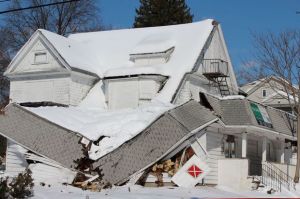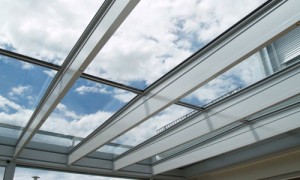How to Prevent Collapse of Chicago Roofing
Collapse of Chicago roofing is a serious structural failure that can affect other parts of a house. Since roof frames connect to the walls, there is a good reason to believe that the walls would also be affected if the frames are compromised.
The danger involved in a roof collapse makes it imperative that homeowners fully understand the way roofs work, particularly their load-bearing capacity.
Load Capacity. A residential roof can normally support up to 20 pounds per square foot of snow unless the roof structure is damaged or weakened. In mountainous and snow-prone areas in the United States the load capacity of roofs is much higher to enable them to withstand greater snow weight. You can check with your local building official to know if your house had higher loads at the time it was constructed.
Risk Evaluation. Snow tends to run off a roof that has a steeped slope, especially those with slopes greater than 3 inches per 12 inches of horizontal distance. In the northern areas, houses are generally built with steeper slopes or roof pitch. Snow accumulates more on low-sloped or flat roofs. Porches generally have low-pitched roofs. Furthermore, expect snow build up on sections of the home that are adjacent to higher parts of the house since snow blown by strong winds from taller places would fall there.
Estimating Snow Weight. Four feet of fresh snow on the roof weighs around 20 pounds. Two feet of packed snow weighs around 20 pounds. For ice, 1 inch of it is equivalent to around 1 foot of fresh snow.
Removing Snow. When the amount of snow that falls on your roof exceeds 20-25 pounds per square foot of roof space, consider the situation as serious or in the danger zone. You should consider removing the snow from the roof. For a safe removal of snow, you can use an extendible snow rake that is widely available at your local supply store to remove snow without going up the roof or leaving the safety of the ground. You can engage the services of a professional contractor to remove the snow too.
Preventing Snow. Aside from using a snow rake, other alternatives for preventing or removing snow and ice on the roof are available such as heat cables installed on the roof and calcium chloride placed inside nylon stockings and positioned strategically on the problem areas on the roof. Roof tablets may be used as well, which are simply thrown into the roof.


